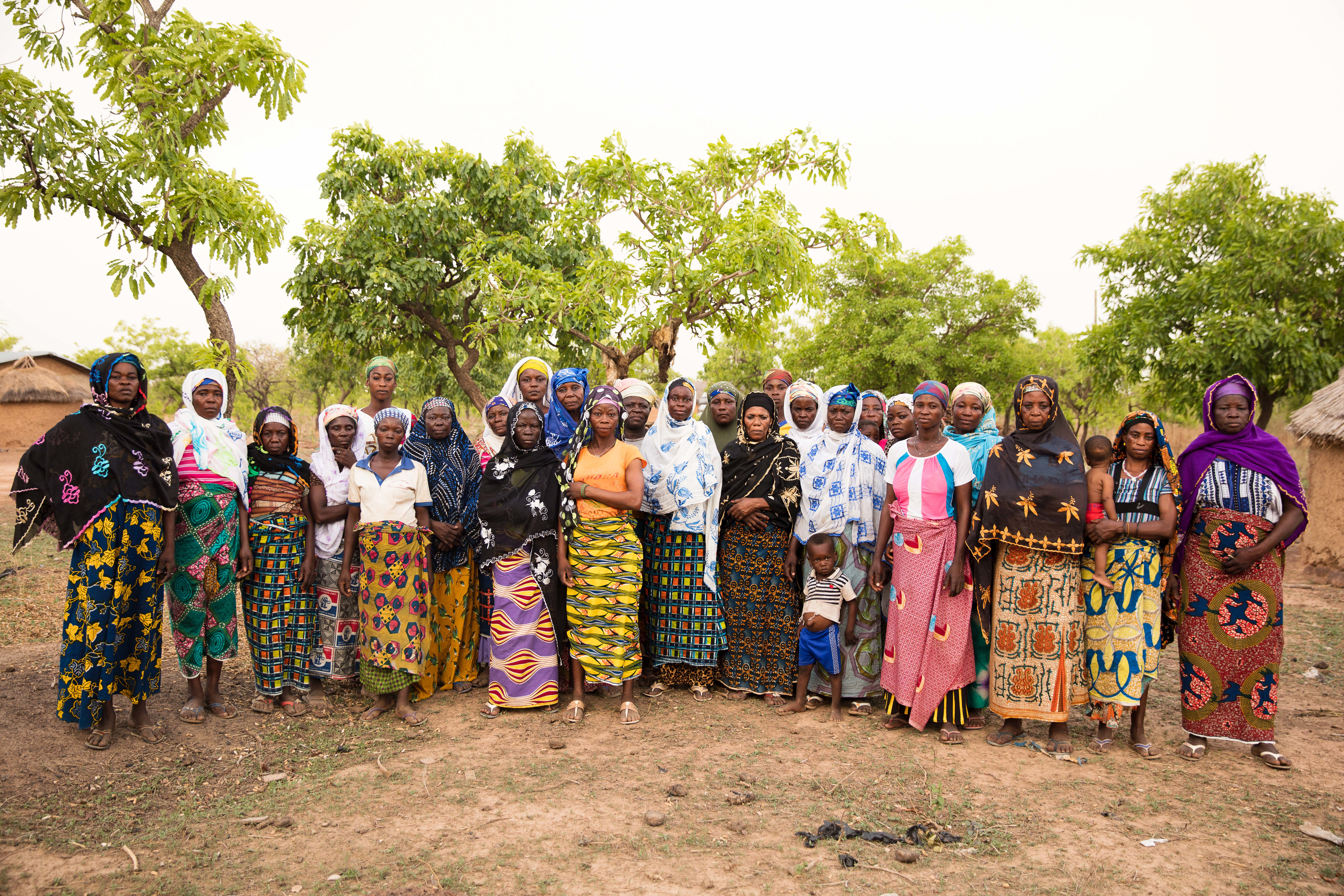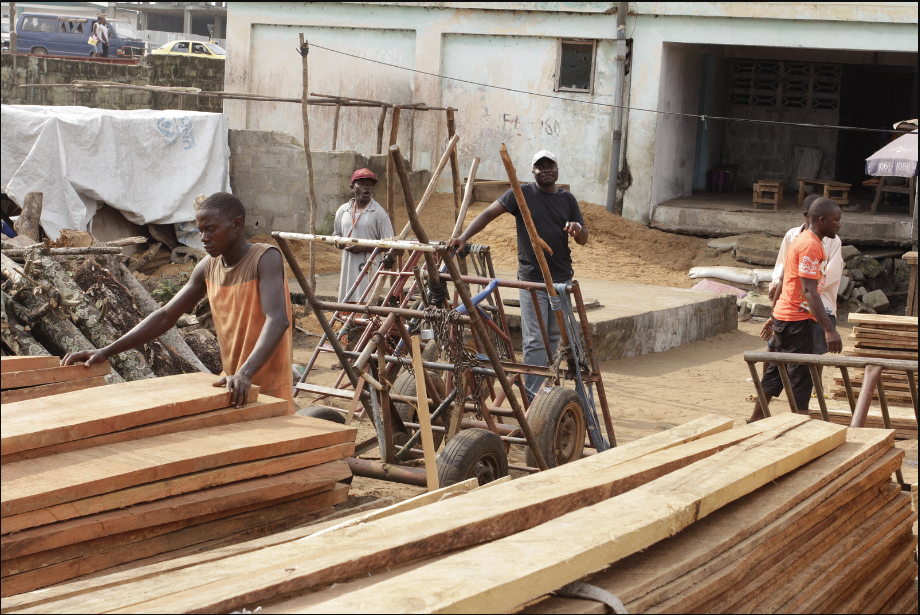private sector

Food and forests: We can have them both
Agriculture provides most of the world’s food. It also contributes the most to global deforestation.![]() This does not mean, however, that we need to choose between feeding a rapidly growing population and protecting the forests that are so essential to our wellbeing.
This does not mean, however, that we need to choose between feeding a rapidly growing population and protecting the forests that are so essential to our wellbeing.
While many countries have first depleted their forests before seeing a rebound in tree cover, this “business-as-usual” scenario is not inevitable.![]() But changing it does require a paradigm shift. In part, it means redefining what “successful” pathways to sustainable development look like, so that they resonate with local leaders and reflect local realities – and thus gain political support. In addition, transitioning away from the status quo depends on forming new and creative partnerships between companies, communities, governments, and investors.
But changing it does require a paradigm shift. In part, it means redefining what “successful” pathways to sustainable development look like, so that they resonate with local leaders and reflect local realities – and thus gain political support. In addition, transitioning away from the status quo depends on forming new and creative partnerships between companies, communities, governments, and investors.
How to bring about this new food-and-forest paradigm? An ongoing study - funded by the Program on Forests (PROFOR) and led by the World Bank's Agriculture and Environment Global Practices along with experts from many agricultural and environmental organizations - is trying to find concrete answers. The team is focusing on six agricultural commodities: three that are heavily implicated in deforestation activities (palm oil, soy and beef), and three that could include planting trees in their cultivation (cocoa, coffee and shea butter). In an initial synthesis study, the researchers draw out some key lessons for removing deforestation from agricultural supply chains sooner rather than later, and for increasing the planting of trees in agricultural lands. Here are just six of their takeaways:
- Success starts with the farmer. There are many agricultural practices which, if implemented at scale, can benefit crop yields while slowing deforestation or increasing tree cover. Not only must farmers be fully equipped with this information, but they should be consulted and supported in making the transition to sustainable production systems.
- It is important to recognize and reward innovators. A system based entirely on punishing those who contribute to deforestation is unlikely to be effective in the long run. A more promising approach is to reward farmers who use creative, forest-friendly practices, while widely promoting the monetary and ecosystem benefits of these methods.
- Corporations’ sustainability pledges are important but not sufficient. A new and promising trend is the emergence of technical, commercial, and financial partnerships between companies, farmers, communities, and regional authorities.
- Government policies and programs need to be updated. In many cases, existing regulations prevent farmers from harvesting and marketing trees, deterring them from planting trees in agricultural landscapes. Ministries of agriculture and of environment need to work together to revise these legal frameworks so that farmers can sustainably grow and harvest trees on their lands.
- Regional action is critical. Efforts to combat deforestation in the agricultural sector sometimes fail because supply chains transcend national boundaries. Large-scale transformation is possible, but it needs to be backed-up by multi-stakeholder processes that lay out a shared vision for a region.
- The costs of forest loss need to be communicated more clearly. Forest conservation is often viewed through the lens of foregone agricultural profits. Governments should do a better job of communicating why forests are so crucial. For instance, improved management of shea trees in Sahelian countries could strengthen economic returns and ecological stability, with possible knock-on benefits like sustained income generation, jobs for women and youth, and lower incidence of conflict and migration induced by poor access to natural resources.
Initial findings from the synthesis study, “Leveraging agricultural value chains to enhance tropical tree cover and slow deforestation (LEAVES),” will be shared at the Global Landscapes Forum (GLF): The Investment Case in Washington, D.C. on May 30th. Its authors hope to start building momentum for their new approach to productive and sustainable agriculture.
“Although the private sector has been the main driver behind sustainability initiatives like Brazil’s Soy Moratorium and Cattle Agreement, support from the World Bank was instrumental,” said Dora Nsuwa Cudjoe, Senior Environmental Specialist, and Co-Task Team Leader of the LEAVES knowledge product at the World Bank. “The Bank can show the same level of engagement in the agroforestry commodities like coffee, cocoa, and shea, to help scale up private sector efforts. The opportunity is here.”
Photo: Josephhunwick.com
For stories and updates on related activities, follow us on twitter and facebook , or subscribe to our mailing list for regular updates.
Last Updated : 06-16-2024

How Productive Forests can Help Foster Green Growth and Mitigate Climate Change
Across the globe, demand for wood products is increasing and expected to quadruple by 2050. This trend is exacerbating deforestation and forest degradation. But it also presents an opportunity for a better approach to farming and managing forests.
A new report, Harnessing the Potential of Private Sector Engagement in Productive Forests for Green Growth, shows how sustainably harvesting wood products can help meet growing demand while providing jobs, mitigating climate change and conserving primary forests.
While it’s well known that trees and forests provide an important carbon sink, the carbon stored in forest products is often overlooked. Forest products and materials such as those used for construction and furniture store carbon for decades and even centuries.
Choosing wood products over other non-renewable materials, such as concrete and steel for construction materials, also offers climate benefits. Concrete and steel require fossil fuel to produce, making these alternatives much more carbon intensive. For example, producing a concrete wall puts 15 times more carbon dioxide into the atmosphere than making a wooden one.
The new report, funded by the Climate Investment Funds (CIF) and the Program on Forests (PROFOR), examined the economies of six countries - Ethiopia, Colombia, Mexico, Mozambique, Peru and Vietnam - to estimate the potential climate mitigation benefits from forest-based supply chains. Together, the six countries could sequester more than 150 million tons of CO2e (see table below) by 2030 with adequate investments in forest restoration and the increased production and use of wood products. Such an approach could help countries meet their climate commitments under the Paris Climate Agreement.
Investing in wood supply to meet demand through landscape restoration and other means also brings benefits, especially by creating new forest industry jobs in rural areas. Potential employment benefits in the six countries studied are depicted in the table below. In addition, projected demand for wood products could encourage the private sector to make long-term investments in productive forests, plantations, and wood processing.
Moving forward on sustainably harvesting forests is a delicate balance between production and conservation. If promoting forest products leads to deforestation, then climate mitigation is lost. To get the balance right, governments must create an enabling environment through better law enforcement and governance. That would help to protect and more sustainability use forests, improve land tenure, and provide the incentive mechanisms to attract private sector investments. Plantations will be key for renewable energy - sustainable charcoal and wood chips - in the future. Private investors, rural communities and forest owners also need technical assistance to help with forest management and production, as well as easier and quicker access to market information.
“Investing in sustainably managing and using forests offers longer-term benefits over the frequently under-productive and disorganized use of many forests today,” says Gerhard Dieterle, program manager for the World Bank’s Forest Investment Program. “As found in this study, doing so would unquestionably benefit people and the planet.”
Click here to watch the video on the interview with the authors.
For stories and updates on related activities, follow us on twitter and facebook , or subscribe to our mailing list for regular updates.
Last Updated : 06-16-2024

Share
Related Links
Making forest concessions in the tropics work to achieve the 2030 Agenda: Voluntary Guidelines
Sustainable Wood for a Sustainable World
Keywords
Authors/Partners
FAO
Forest Concessions Management
CONTEXT
In collaboration with the World Bank, with financial support from PROFOR, this FAO-led activity aims to develop guidelines for forest concession and construct lessons learned and best practices, building on FAO’s Forest Concession Initiative (FCI), while capturing trends and needs brought up by new realities, such as climate change strategies and the Sustainable Development Goals (SDGs). The results of the activity are aimed to benefit national and subnational forest management and land use planning agencies, community forest managers and other international NGOs and forest management stakeholders.
CHALLENGE
Forest concessions are an important instrument used for allocating public forests to a private entity. It is used as a contract to establish the rights to harvest in a given forest area and regulate responsibilities, prices, incentives and sanctions of the government and the concession holder. Most typically, forest concessions are granted to companies, but there are also cases of concessions granted to communities. Forest concessions are adopted in all parts of the world, especially in and tropical forests, and are an important tool for sustainable forest management (SFM), especially considering that the majority of forests in tropical forests are public. Forest concessions, which can be granted through different contractual arrangements, can enable a wide range of socioeconomic benefits, such as security of tenure, increased income, access to social services and local development.
Forest concessions have the potential to be instrumental in achieving progress towards the SDGs, especially by creating more sustainable terrestrial ecosystems that can alleviate poverty, and contribute to climate change mitigation and adaption. Despite these potential benefits, results from forest concessions in tropical forests remain dismal, constrained by weak local governance and global timber market failure to reward sustainable forest management.
In the FAO-led Forest Concession Initiative (FCI), results suggest that forest concessions are very heterogeneous and have been implemented to respond to different, and not always clear, policy objectives, and most typically in weak governance environments. As a result, forest concessions are often perceived negatively and are often associated as being drivers of forest degradation and social inequality. Questions also remain about their financial and economic feasibility. The FCI points to the need of building on lessons learned from the experience with forest concessions in tropical forests to inform the processes in allocating public production forests. This program, therefore, follows up on FCI’s results by developing guidelines for forest concessions, building on lessons learned and best practices, while capturing trends and needs brought up by new realities, such as climate change strategies, the SDGs and the countries’ Nationally Determined Contributions (NDCs).
APPROACH
This activity will be led by FAO, in collaboration with PROFOR, by conducting the following tasks:
- Analytical framework with a typology of forest concessions, including policy objectives, legal aspects and contractual arrangements, scope of forest management (objectives and activities), main stakeholders, and monitoring and evaluation.
- Conduct surveys targeting a wide range of stakeholders from the public and private sectors including concessionairis, community organizations, policy makers, private sector bodies involved in forest concessions and alternative allocations models to help identify enabling conditions for effective management of public production forests in tropical countries and to investigate forest concession’s contribution to achieving the SDGs and NDCs.
- Stakeholder review and validation workshops that target the three focus regions—West and Central Africa, Southeast Asia and Latin America—and bring the key stakeholders together to discuss, validate and further elaborate the draft framework principles and guidelines.
- Final guidelines and publication.
RESULTS
The final report was launched in May 2018 and is available here and from the FAO website.
For stories and updates on related activities, follow us on twitter and facebook , or subscribe to our mailing list for regular updates.
Author : FAO
Last Updated : 06-15-2024








